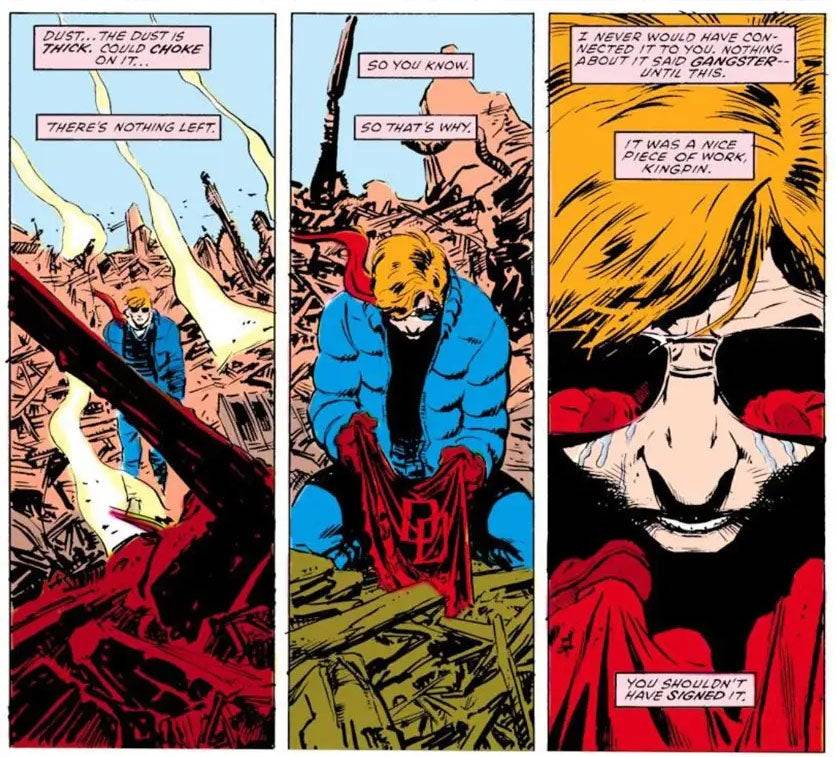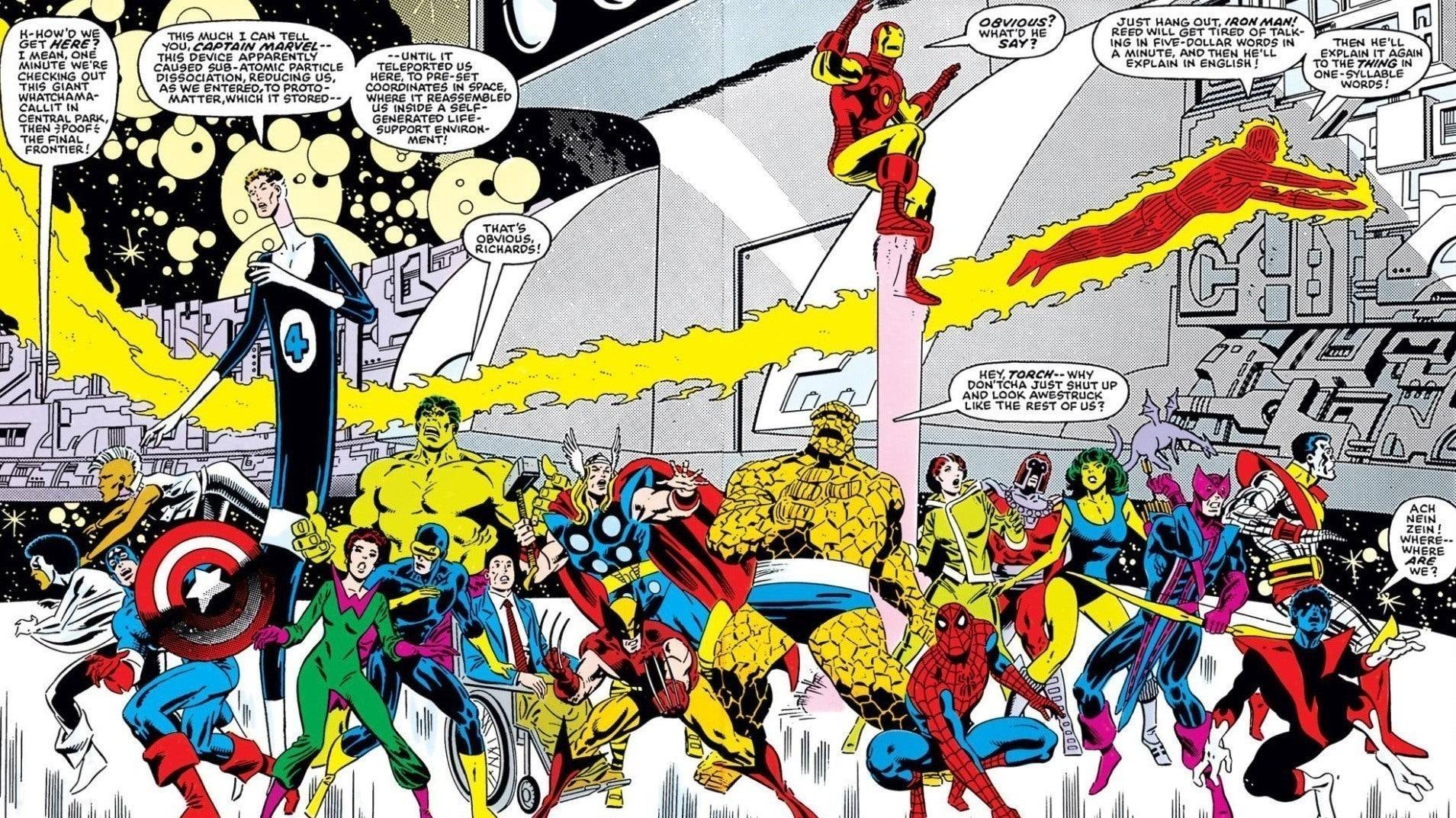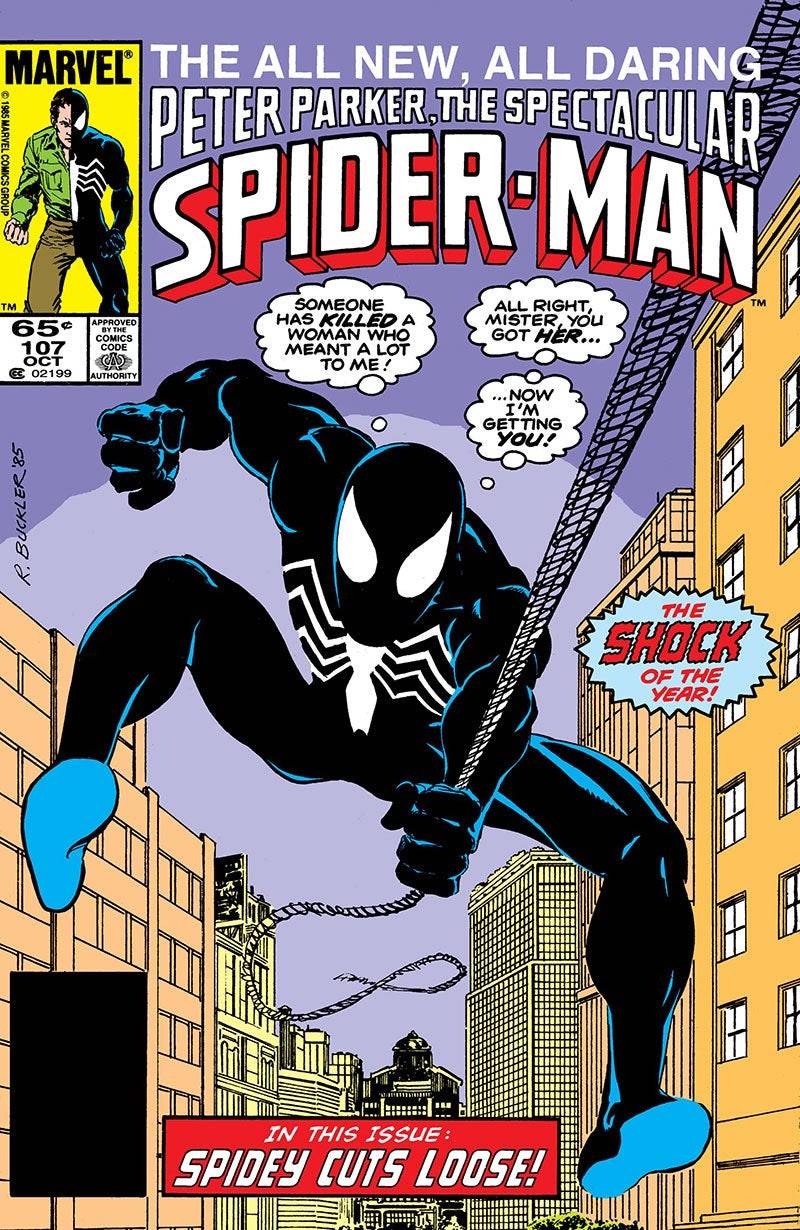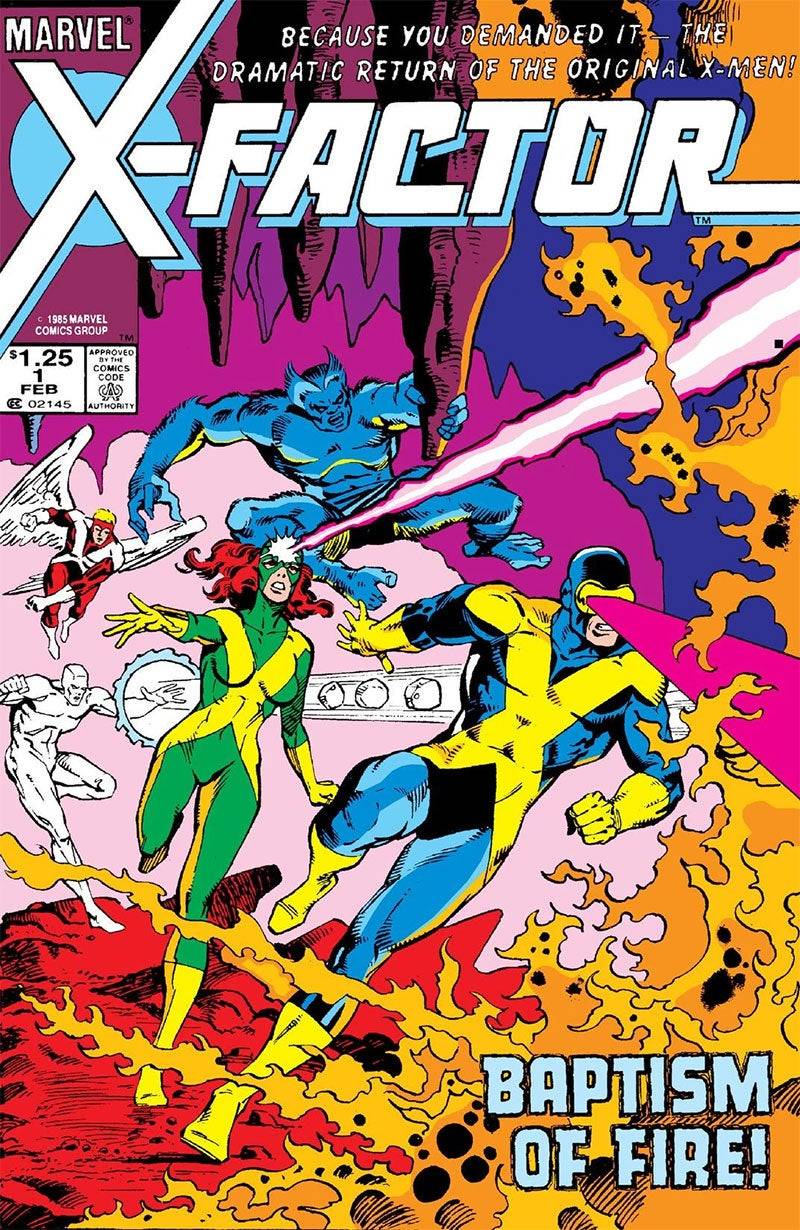Frank Miller's Return to Daredevil in Born Again
The mid-1980s marked a golden era for Marvel Comics, both creatively and financially. Having overcome the financial struggles of the late '70s, largely thanks to the success of Star Wars, Marvel was poised to revolutionize the comic book industry with the release of Secret Wars in 1984. This series not only impacted the Marvel Universe but also set a new standard for the comic industry. The repercussions were vast and varied, steering Marvel's heroes and villains into fresh narratives that would shape the years to come.
This period also birthed several other iconic storylines, such as Frank Miller's Born Again arc in Daredevil, the return of Jean Grey in X-Factor, and Walt Simonson's Surtur Saga in Thor, among others. In this article, we delve into these pivotal stories and other significant developments from the same timeframe. Join us as we continue our exploration of Marvel's essential issues in Part 8 of our series!
More Essential Marvel
- 1961-1963 - The Birth of a Universe
- 1964-1965 - The Sentinels Are Born and Cap Dethaws
- 1966-1969 - How Galactus Changed Marvel Forever
- 1970-1973 - The Night Gwen Stacy Died
- 1974-1976 - The Punisher Begins His War on Crime
- 1977-1979 - Star Wars Saves Marvel From Bankruptcy
- 1980-1982 - Did the Dark Phoenix Saga Usher in the Greatest Decade for Marvel?
Frank Miller's Born Again and Walt Simonson's Surtur Saga
For some of the most celebrated narratives of this era, look no further than Born Again, Frank Miller's return to writing Daredevil, this time with David Mazzuchelli on art. Spanning Daredevil #227-233, this arc is often hailed as the definitive Daredevil story. It follows Karen Page, who, in a desperate state of addiction, sells Daredevil's secret identity for heroin. The information eventually reaches the Kingpin, who uses it to dismantle Matt Murdock's life, leaving him homeless, jobless, and isolated. Matt hits rock bottom before being rescued by his mother, a nun named Maggie.
Matt's gradual resurgence as Daredevil, juxtaposed with the Kingpin's descent into fanaticism, crafts a compelling narrative. This story was loosely adapted in Season 3 of Netflix's Daredevil and will inspire the upcoming Disney+ series Daredevil: Born Again.

Walt Simonson's tenure on Thor, starting with issue #337 in 1983, introduced Beta Ray Bill, an alien worthy of wielding Mjolnir. Simonson's work revitalized Thor's mythic fantasy roots, culminating in the year-long Surtur Saga from #340-353. This saga features the fire demon Surtur's quest to bring about Ragnarok using the Twilight Sword, with Malekith the Accursed as Thor's new adversary. The climax sees Thor, Loki, and Odin united against Surtur. Elements of this saga influenced the plots of Thor: The Dark World and Thor: Ragnarok.
Secret Wars Changes Comics Forever
In Part 4 of this series, we explored how the 1973 Avengers/Defenders War foreshadowed the event crossovers that would dominate Marvel and DC's publishing strategies. This trend fully materialized with the 1984 release of Secret Wars, a 12-issue miniseries crafted by then Editor-in-Chief Jim Shooter, with art by Mike Zeck and Bob Layton. Conceived as a marketing tie-in with Mattel's toy line, the story revolves around the Beyonder, who transports Marvel's heroes and villains to Battleworld to battle for supremacy. While the series is known for its large cast and significant universe-altering effects, it often lacks depth in character development, with some characters, like the X-Men, acting out of character. The sequel, Secret Wars II, and DC's Crisis on Infinite Earths solidified the event-driven model in comic publishing.

Spider-Man’s Symbiote Suit and Other Iconic Spidey Stories
Following the foundational runs by Stan Lee and Gerry Conway, Roger Stern revitalized Amazing Spider-Man starting with issue #224. His tenure introduced the Hobgoblin in #238, quickly establishing him as one of Spider-Man's most formidable foes. Stern's original Hobgoblin saga was cut short due to editorial interference, leaving the villain's identity unrevealed until Stern's return in the 1997 miniseries Spider-Man: Hobgoblin Lives.
Simultaneously, Amazing Spider-Man #252 introduced Spider-Man's black symbiote costume, which originated in Secret Wars #8. This costume sparked a long-running subplot leading to the emergence of one of Spider-Man's most iconic villains. The symbiote saga has been adapted across various media, including Sam Raimi's Spider-Man 3, animated series, and video games. Another significant story from this period is The Death of Jean DeWolff in Spectacular Spider-Man #107-110, a darker tale involving Spider-Man's pursuit of the Sin-Eater and his conflict with Daredevil.

Jean Grey Returns, the Rise of Apocalypse, and Other Mutant Landmarks
The mid-1980s were also a transformative time for Marvel's mutants. Vision and the Scarlet Witch #4 confirmed Magneto as the father of Quicksilver and Scarlet Witch, a revelation that remained canon for decades. X-Men #171 saw Rogue switch sides from the Brotherhood of Evil Mutants to the X-Men, cementing her status as a beloved heroine. X-Men #200 marked Magneto's trial and subsequent leadership of Xavier's School, a storyline adapted in X-Men '97.
The most pivotal mutant developments were Jean Grey's resurrection and the introduction of Apocalypse. Jean returned in a two-part story across Avengers #263 and Fantastic Four #286, leading to the formation of X-Factor with the original X-Men. X-Factor #5-6 introduced Apocalypse, an ancient mutant merged with Celestial technology, who became a central antagonist in the X-Men universe and beyond.

-
 Jan 27,25Roblox: Bike Obby Codes (January 2025) Bike Obby: Unlock Awesome Rewards with These Roblox Codes! Bike Obby, the Roblox cycling obstacle course, lets you earn in-game currency to upgrade your bike, buy boosters, and customize your ride. Mastering the various tracks requires a top-tier bike, and thankfully, these Bike Obby codes deliver
Jan 27,25Roblox: Bike Obby Codes (January 2025) Bike Obby: Unlock Awesome Rewards with These Roblox Codes! Bike Obby, the Roblox cycling obstacle course, lets you earn in-game currency to upgrade your bike, buy boosters, and customize your ride. Mastering the various tracks requires a top-tier bike, and thankfully, these Bike Obby codes deliver -
 Feb 20,25Where to Preorder the Samsung Galaxy S25 and S25 Ultra Smartphones Samsung's Galaxy S25 Series: A Deep Dive into the 2025 Lineup Samsung unveiled its highly anticipated Galaxy S25 series at this year's Unpacked event. The lineup features three models: the Galaxy S25, S25+, and S25 Ultra. Preorders are open now, with shipping commencing February 7th. Samsung's web
Feb 20,25Where to Preorder the Samsung Galaxy S25 and S25 Ultra Smartphones Samsung's Galaxy S25 Series: A Deep Dive into the 2025 Lineup Samsung unveiled its highly anticipated Galaxy S25 series at this year's Unpacked event. The lineup features three models: the Galaxy S25, S25+, and S25 Ultra. Preorders are open now, with shipping commencing February 7th. Samsung's web -
 Jul 02,22Isophyne Debuts as Original Character in Marvel Contest of Champions Kabam introduces a brand-new original character to Marvel Contest of Champions: Isophyne. This unique champion, a fresh creation from Kabam's developers, boasts a striking design reminiscent of the film Avatar, incorporating copper-toned metallic accents. Isophyne's Role in the Contest Isophyne ent
Jul 02,22Isophyne Debuts as Original Character in Marvel Contest of Champions Kabam introduces a brand-new original character to Marvel Contest of Champions: Isophyne. This unique champion, a fresh creation from Kabam's developers, boasts a striking design reminiscent of the film Avatar, incorporating copper-toned metallic accents. Isophyne's Role in the Contest Isophyne ent -
 Jan 11,25Jujutsu Kaisen Phantom Parade: Tier List Revealed This Jujutsu Kaisen Phantom Parade tier list helps free-to-play players prioritize character acquisition. Note that this ranking is subject to change with game updates. Tier List: Tier Characters S Satoru Gojo (The Strongest), Nobara Kugisaki (Girl of Steel), Yuta Okkotsu (Lend Me Your Stren
Jan 11,25Jujutsu Kaisen Phantom Parade: Tier List Revealed This Jujutsu Kaisen Phantom Parade tier list helps free-to-play players prioritize character acquisition. Note that this ranking is subject to change with game updates. Tier List: Tier Characters S Satoru Gojo (The Strongest), Nobara Kugisaki (Girl of Steel), Yuta Okkotsu (Lend Me Your Stren
